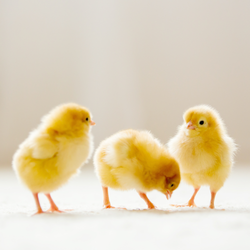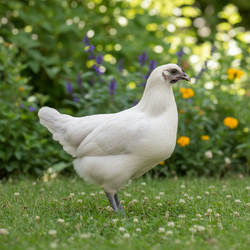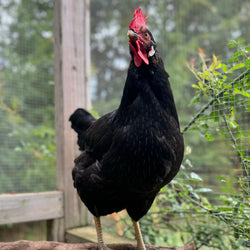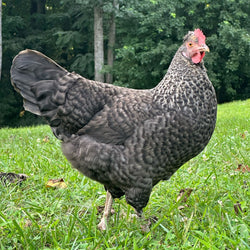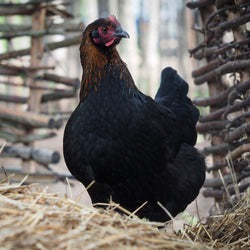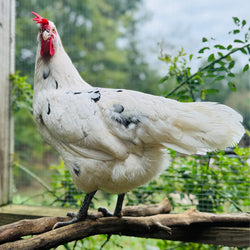page=4/--
Frequently Asked Questions
Here we answer the most commonly-asked questions about ordering, chicken care, and more.
What is the Latin name for chicken?
The Latin name for chicken is Gallus gallus domesticus. In fact, all breeds of chicken, no matter how schmancy, are the same species!
Read MoreWhat is a dust bath, and do my chickens need one?
Why Do Chickens Take Dust Baths? If you’ve ever seen your chickens flopping around in the dirt looking half-dead, don’t panic—they’re just having a spa day! Dust baths are an important (and totally natural) part of a chicken’s self-care routine. When your birds roll and toss dirt into their feathers, they’re doing more than just having fun—they’re helping to protect themselves from pesky parasites like mites and lice. Should I Make a Dust Bath for My Chickens? If your chickens live in a small, covered run or don’t have easy access to dry dirt, providing a dust bath is a...
Read MoreWhat is the difference between different types of chicken feeds like starter, grower, finisher, layer, and developer?
Starter, grower, finisher, layer, and developer are all considered "complete feeds" to offer your chickens, but they come in different varieties,depending on your chicken's current needs. In other words, it's a lot like purchasing dog food for your dog or cat food for your cat. You may start your new pup on puppy feed, then move to an adult feed, and years later give him a feed designed for senior dogs. With a cat, you may start with kitten feed, and from there go to adult feed, or even hairball formulas. You might get grain free--or you might find they...
Read MoreWhat is a dual-purpose chicken?
In the modern day, factory farm chickens are kept for laying or meat production. Laying breeds, or "layers," tend to produce impressive quantities of large eggs and use most of their resources for egg production. Layers may also be called "production breeds," because they are kept specifically for the purpose of egg production. By contrast, "meat birds," often called "broilers," are large-bodied and grow extraordinarily fast. Many are just 6 weeks old when they are processed. "Processed" is a nice way of saying, "killed and butchered for market." So, a dual-purpose breed is generally regarded as a chicken breed that...
Read MoreWhat is incubation?
Incubation is similar to "gestation" in animals that give live birth. It's the process in which the embryo in a fertilized egg develops into a baby and hatches out. Successful incubation of chicken eggs requires heat, humidity---and time. Incubating chicken eggs takes 21 days. A hen will incubate or set on her eggs when she is "broody." Her body temperature and the conditions in the nest provide the appropriate conditions to hatch baby chicks. If you don't have a broody hen to incubate your eggs, you might use an automatic incubator to provide the appropriate environment. Those can range from...
Read MoreWhat is a roost?
A roost is a perch for a chicken---what s/he sleeps on, usually a branch, pole, or board that is elevated. It also refers to the act of resting on it: roosting. Here you can see a roost through the chicken pophole door of this coop. Chickens don't have grasping feet the way songbirds do, for instance, so chickens prefer a flat surface. Even an elevated 2 x 4, with planed, sanded, or slightly rounded edges work nicely. Round poles or branches are okay, too, but they should be on the larger side. Whatever you do, be sure not to use...
Read MoreWhat is a chicken coop?
The word "coop" simply refers to the structure that your chickens live in. A run refers to the enclosed part of the chickens' area that is outside, ideally with access to pasture. In hot dry areas, sometimes coops are three-sided, with the fourth wall made of welded wire for security against predators. The "missing" wall provides extra ventilation and makes sure the coop doesn't get too hot inside. In cold areas, they can be quite small. A coop can be a purpose-built structure or a converted shed or building, made of wood, plastic, adobe, etc. They can be large or...
Read MoreWhat are wattles? Are they they same thing as earlobes?
Wattles are the red flaps of tissue that hang down beneath a chicken's throat. Wattles can be large or small, or mostly nonexistent. Bearded birds, for example, have very small wattles hidden in the fluff of their faces. Wattles are thought to be there as one of the ways that chickens can help cool themselves down and regulate their body temperatures. Note: "Wattles" - what she flutters when she Talks, and "waddles" - what she Does when she walks! A chicken's earlobes are generally smaller and further back along the sides of his or her head.
Read More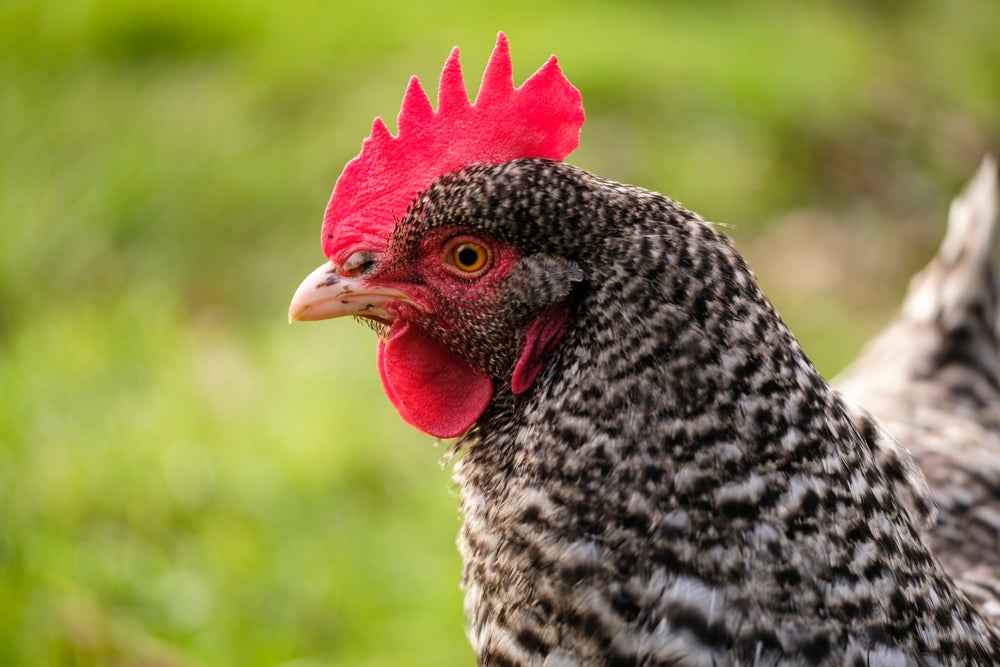
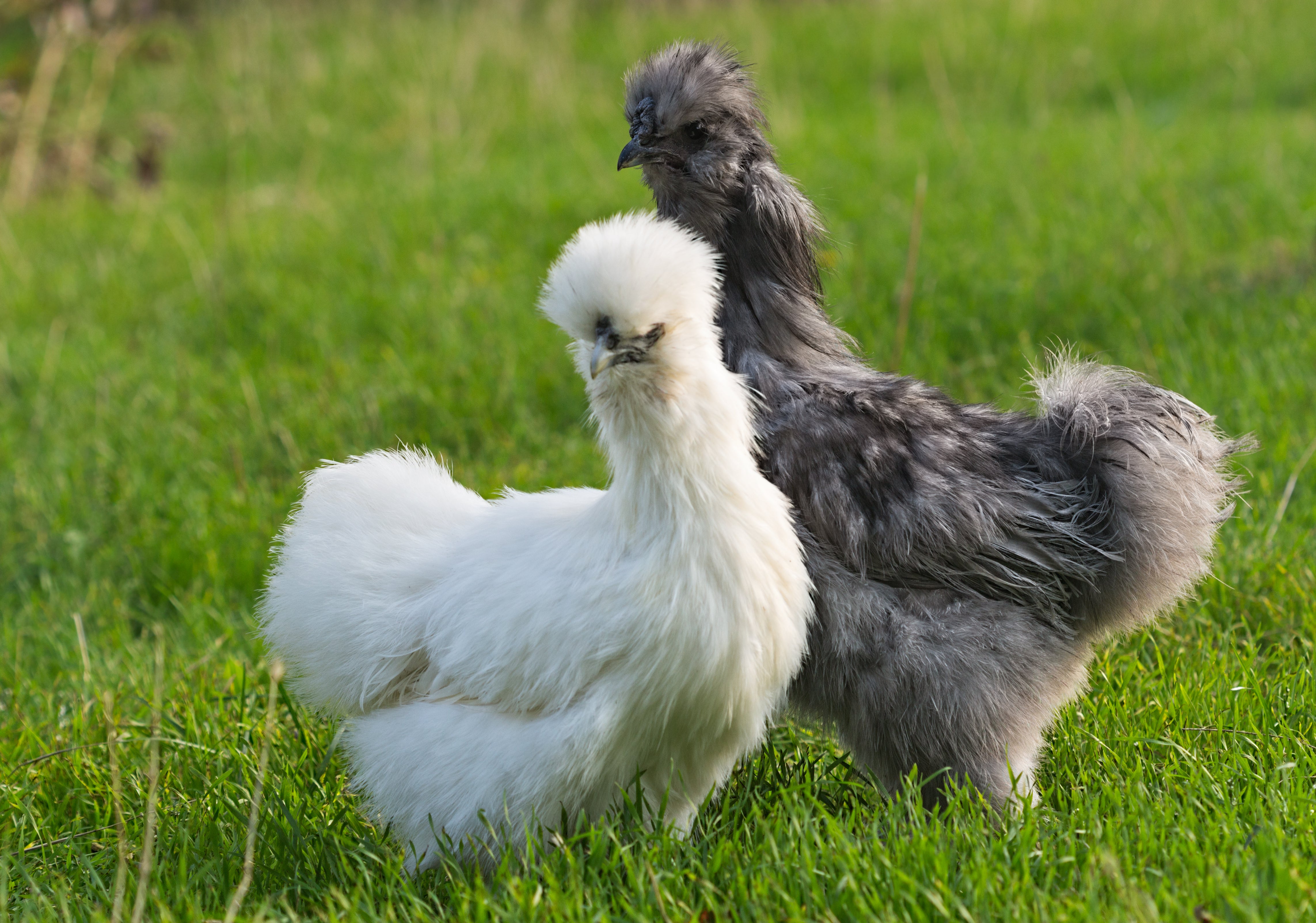
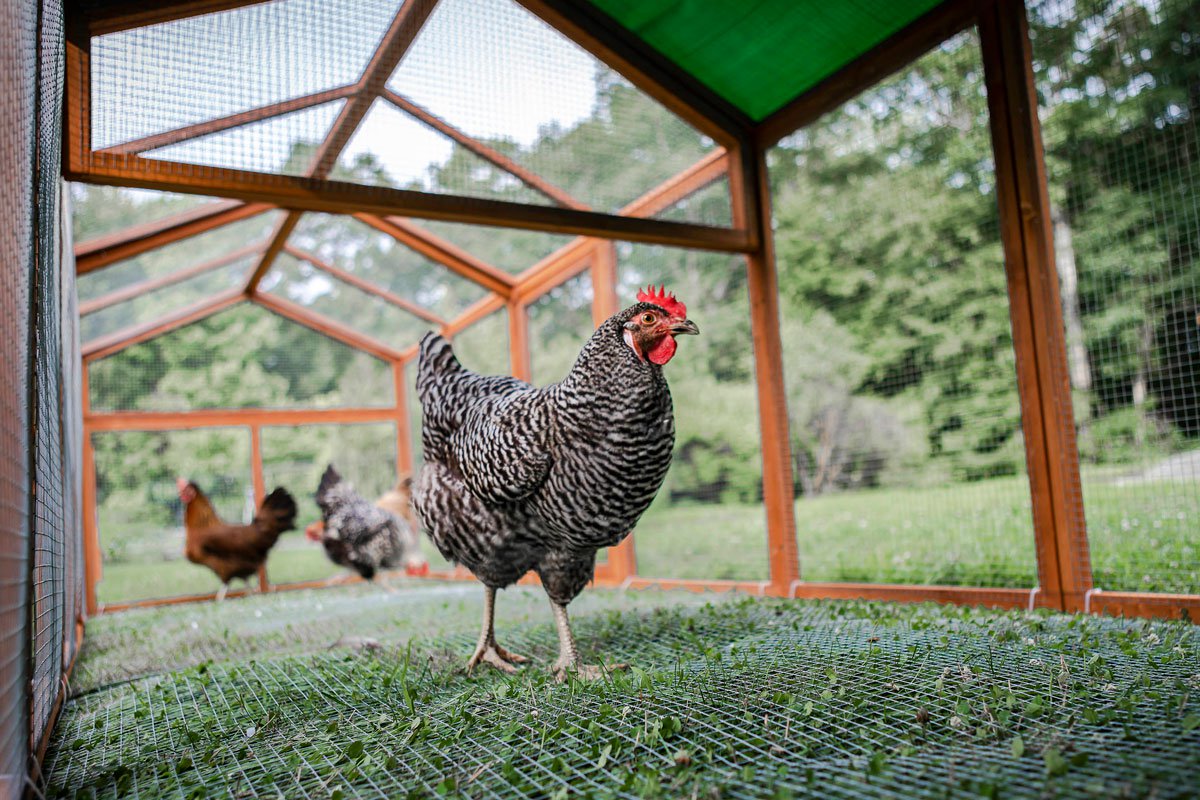
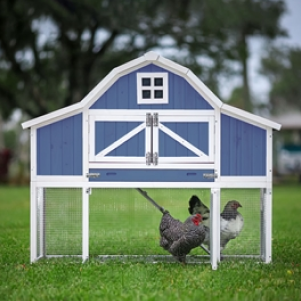
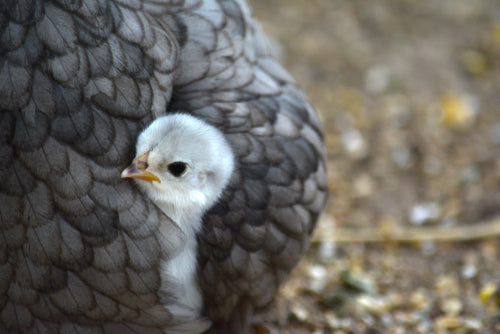
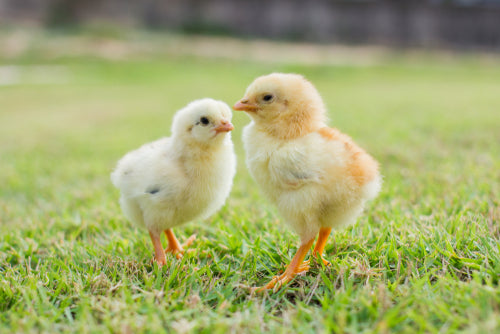
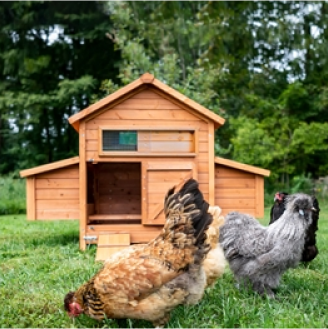

"The Clubhouse" Coop
Easy to assemble and built to last, the Clubhouse Coop is the perfect starter coop for a small flock.

